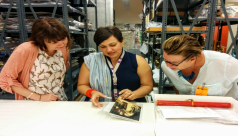Research
Monthly Archive: December rese
Entomystery – why did the beetles go to camp?
Occasionally, I put on my entomological detective hat to investigate insect mysteries. This one was a beetle mystery at my son’s camp in a Toronto elementary school. My son reported a large number (hundreds!) of tiny beetles swarming the windows in his classroom and asked me to look at them.
The Rules of Taxonomy: How Species Are Named
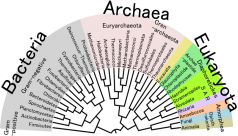
Why should ROM curators care about a proposal to create an organization that would make rules for how species of living things are named?
When Things Go Wrong for Right Whales
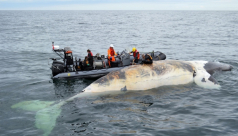
Guest blog written by Environmental Visual Communication student Viridiana Jimenez
The death of seventeen right whales in 2017 represents a loss of over 3% of the population. The significance of this loss has sent the scientific community into a panic. Their deaths were primarily caused by ship collisions or entanglements with fishing gear. As frequent visitors to the Gulf of St. Lawrence, we must now work together to save this species from extinction.
Trees for Life in Lakefield
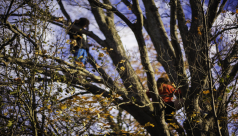
Guest blog written by Environmental Visual Communication student Fenella Hood
When Rebecca Rose left her home in Leslieville and moved her three young children to the quaint village of Lakefield, she felt secure in the belief that she was improving their lot in life. Then one day a notice was slipped through her door from the Township of Selwyn announcing her next-door neighbour's severance application to build a second house and increase his selling power. His small corner lot boasts a stand of seven mature trees that will need to be cut down to make room for the build. “It felt like being kicked in the stomach. I don't want those trees to die, and I don't want to tell my kids.”
From Poop to Plankton: Working Together to Conserve our Ocean’s Gardeners
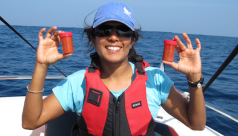
Guest blog written by Environmental Visual Communication student Meghan Callon
From the ROM’s recent “Out of the Depths” Blue Whale Exhibition to the upcoming Canada’s Oceans: Towards 2020 Symposium, the ROM has had a big focus on our oceans this year. In fact, there have been many eyes on Canada’s oceans recently. The Society for Marine Mammalogy Conference was held in Halifax, NS, just two weeks ago, bringing together some of the greatest ocean thinkers from around the world. There, Dr. Asha de Vos gave a keynote speech describing her journey to understanding how blue whales act as our ocean’s gardeners. Check out this blog to learn more about the incredible story of blue whale poop and the researcher who studies it!
True Blue Detectives
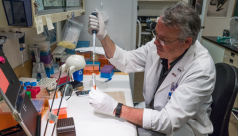
Guest blog written by 2017 Environmental Visual Communication student Connor McDowell
The Royal Ontario Museum has marked yet another first for science with the Blue Whale Project. This achievement could hold keys to the conservation of this majestic, endangered mammal – not to mention a deeper understanding of the unique evolutionary history of the largest living animal on Earth. The beginning of this story starts two thousand kilometers away, on the shores of Newfoundland, Canada with something so small that you can't see it with the naked eye.
Singing the Blues: The Mystery of B105
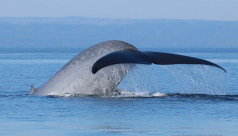
Guest blog written by 2017 Environmental Visual Communication student Viridiana Jimenez
The ocean’s largest and most iconic animal, the blue whale, can produce sounds that cross entire oceans and can be heard from one end of the planet to the other. With humans’ increased presence in the oceans, how are these charismatic giants affected by—and adapting to—our noisy activities? In this blog we follow the story of a single whale, B105 “Invasor”, and muse on how it may have changed its ways to contend with our cacophony.
The Woman Behind the Biggest Heart in the World

Guest Blog written by 2017 Environmental Visual Communication student Fenella Hood
Knife in hand and knee-deep in rotting blubber, Jacqueline Miller is about to do something that has never been done before: carve out a blue whale's heart for preservation. Enveloped in its stench and racing against decay, she cuts deep into the tissue beneath, sure in her knowledge of anatomy but ever wondering: Will this even work? Read on to learn more about one of the team members behind the world's biggest heart in this blog by EVC student Fennella Hood.
Tokummia, a new fossil species from the Burgess Shale traces origin of ants, millipedes and lobsters.
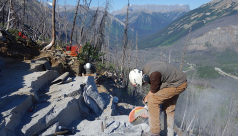
Guest Blog by Cédric Aria, recent PhD graduate from Dept. of Ecology and Evolutionary, UofT, who was based at the ROM. Currently a post-doctoral researcher at the Nanjing Institute of Geology and Palaeontology.

